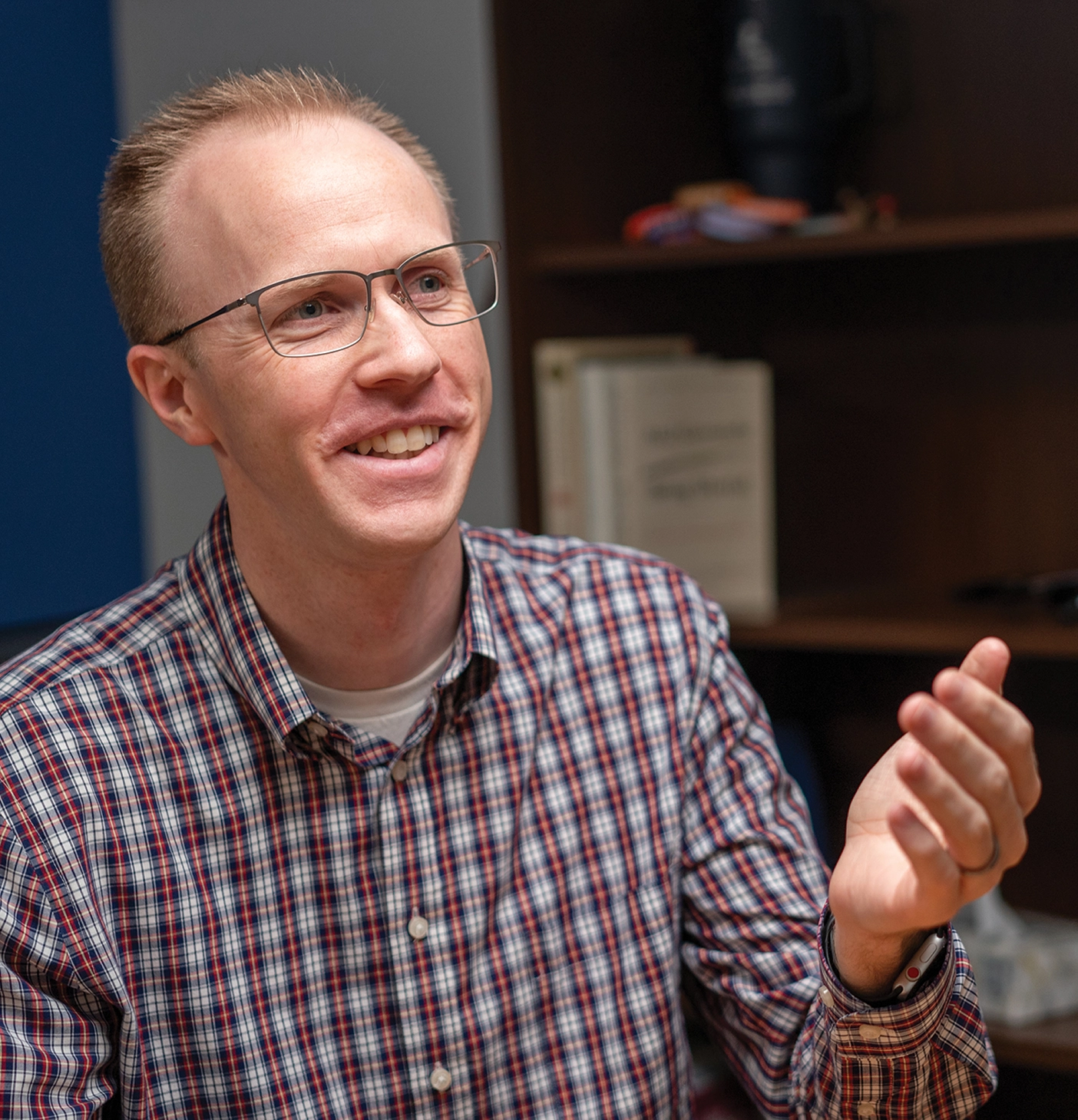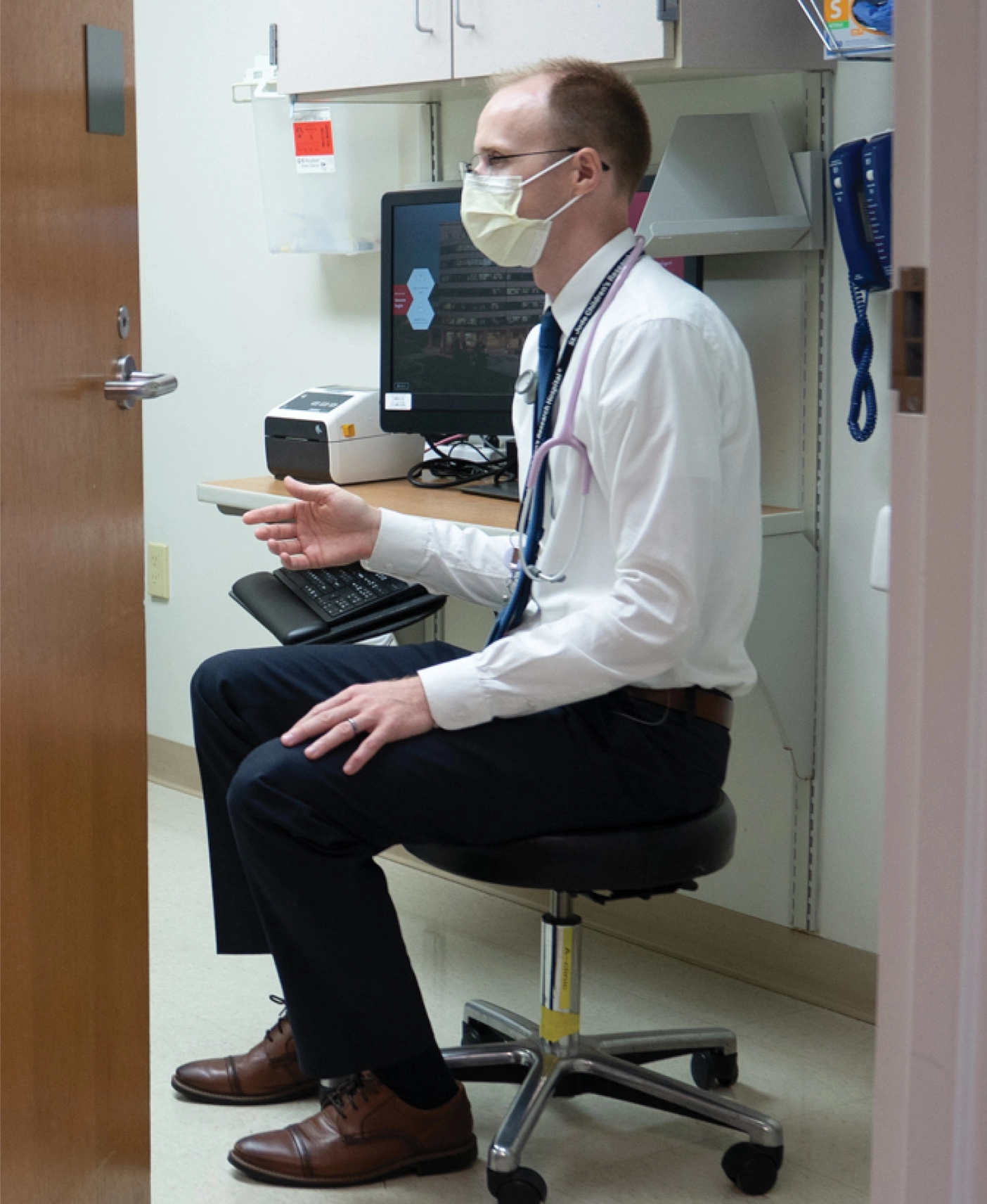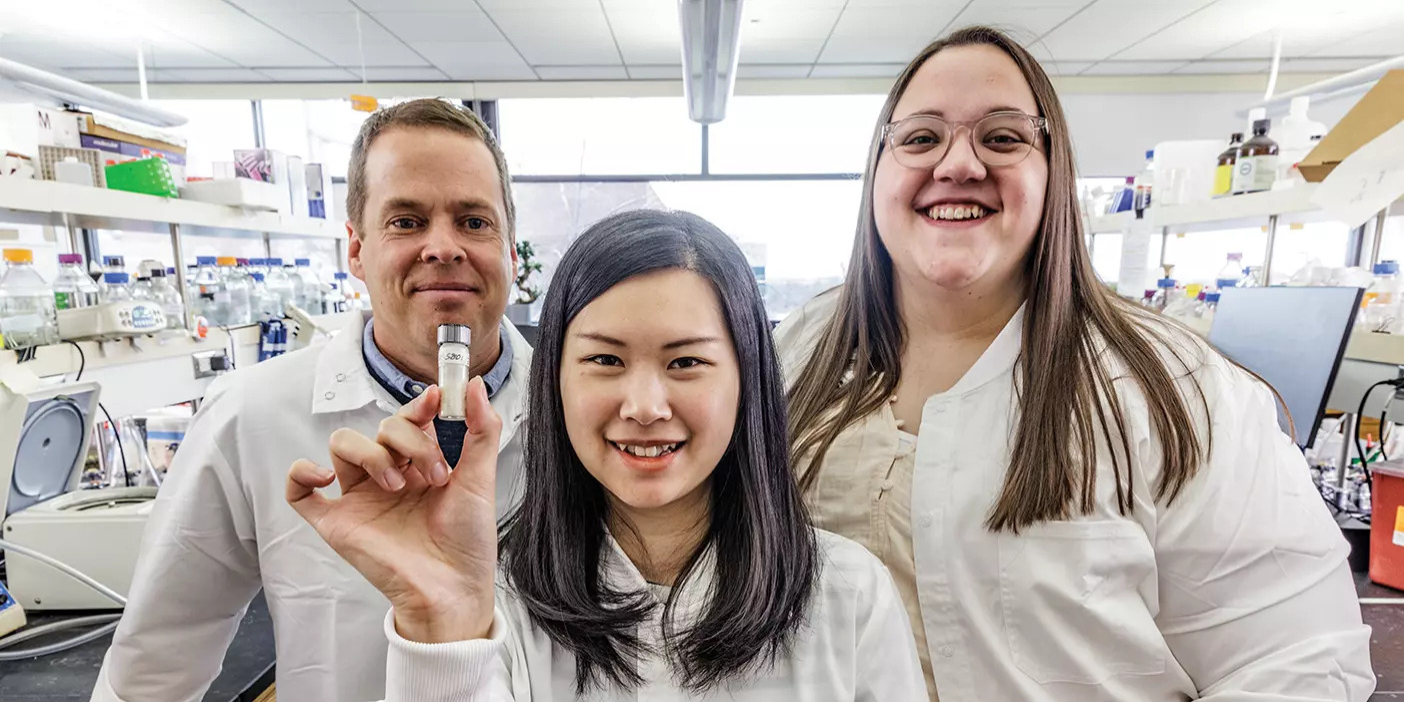A doctor combines the scientific and the human to improve outcomes—one childhood cancer patient at a time.

When 13-year-old Matthew B. Rees (BA ’12) injured his leg playing soccer, doctors worried a tumor might be involved. Rees remembers a sports medicine doctor helping him through the uncertainty—caring about Rees as a person by asking him about school and promising to get him back on the soccer field. The injury turned out to be only a stress fracture, but the doctor’s kindness made a lasting impression.
Little did Rees know that decades later he’d be working to encourage kids with cancer and improve their treatment outcomes.
As a pediatric oncologist at St. Jude Children’s Research Hospital, Rees studies improvement science—the systematic improvement of patient care. “No system is perfect,” Rees says. “Where are the gaps and how can we make it better?”
The focus is especially needed in an area like oncology, where Rees’s patients receive high-risk treatments, including complex chemotherapy regimens. Patients may be at risk of blood clots, dehydration, and other complications. Rees and his peers balance such challenges with maintaining patients’ vital body functions. His research uncovers how different treatments and therapeutic strategies affect patient outcomes and lays out a road map for providing optimal care.
But he knows high-quality care is an art as much as a science.
“Medicine is a very human endeavor at the most fundamental level.”
—Matthew Rees
“Medicine is a very human endeavor at the most fundamental level,” says Rees, who was a French studies major at BYU. Working in medicine involves “people sharing some of the most intimate aspects of their life or going through some really hard times with you.”

People often assume that working with childhood cancer patients is all “doom and gloom,” but Rees says his work in pediatric oncology is often “bright and positive and cheerful.” Most kids are fun and outgoing, and he finds ways to lighten the mood by “singing ‘Happy Birthday’ and playing Uno with the kids while talking with their parents about the treatment plan,” he says.
He has patients who are sad and afraid and refuse to talk to him for months. With these, he tries to find a way to connect—telling stories about his own kids, joking, or sharing pictures. He finds out what is important to them and what they want to talk about. “I may have cheered for some football teams I wouldn’t have otherwise cheered for because my patient likes them,” he says.
That doesn’t make the hard moments—like having to tell parents you’ve run out of treatment options or seeing a patient you’ve cared for pass away—any easier. Those moments “rip your heart out every time,” Rees says.
Rees finds solace in the progress being made in cancer treatment—progress fueled in part by his improvement-science research. Today greater than 80 percent of childhood cancer patients in developed countries go on to be long-term survivors.
For Rees, working as a physician is one way to give Christlike service: “I view that as a big part of the way I try to live my faith day to day.” Rees says BYU’s “Enter to learn; go forth to serve” motto captures “how I view my work, as well as who I am as a person and a disciple of Jesus Christ doing my best to . . . ease the burdens of people who are going through hard things.”












